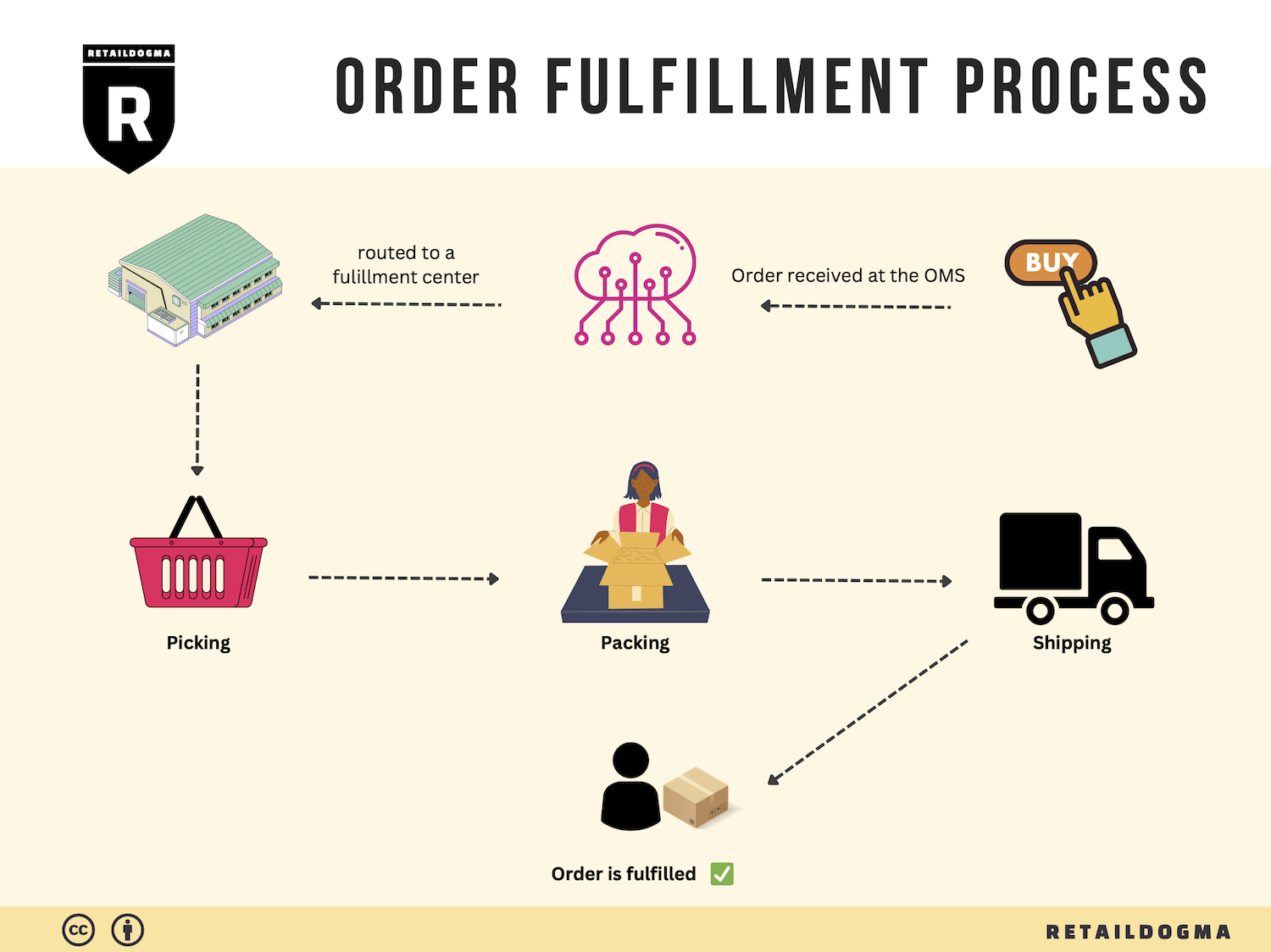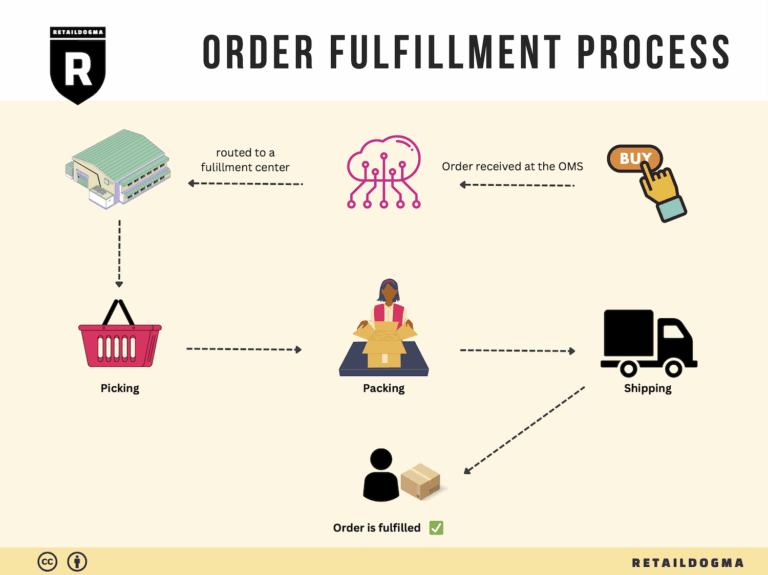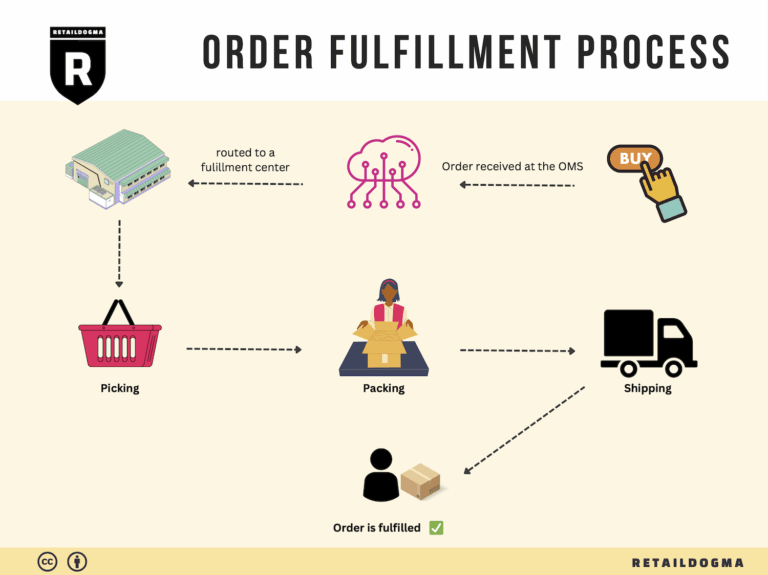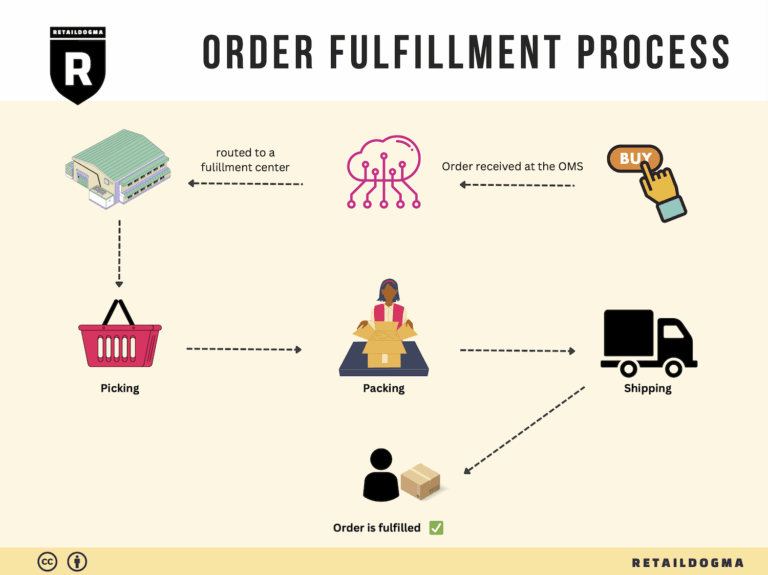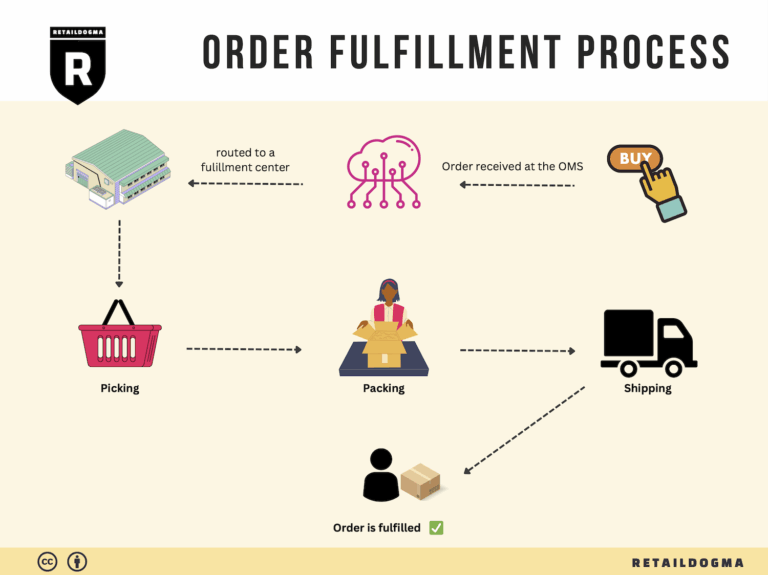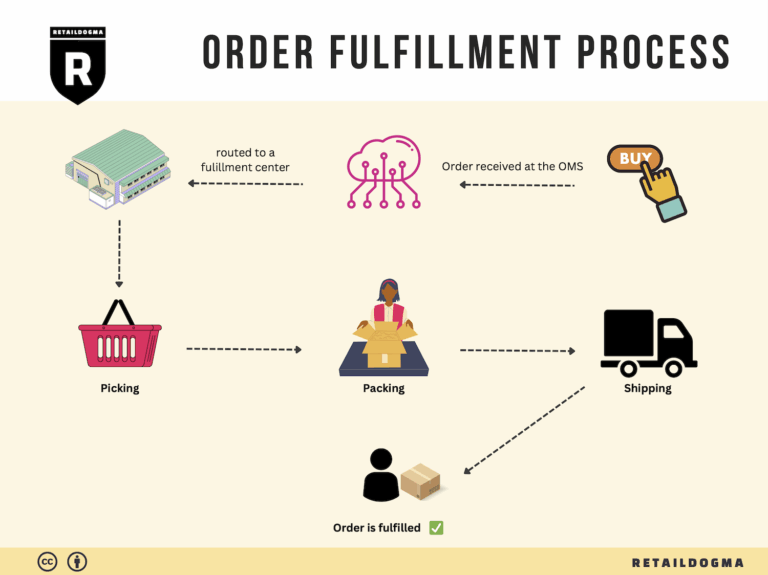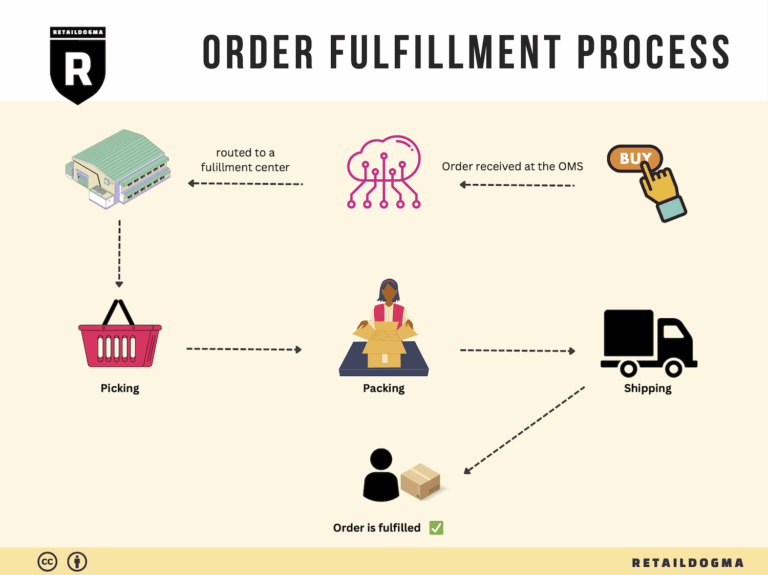Ecommerce Fulfillment Services: The Ultimate Guide (2025)
What is E-commerce Fulfillment? An Introduction for Growing Businesses
Understanding E-commerce Fulfillment: A Vital Component for Growth
As your e-commerce business begins to scale, the excitement of increased sales can quickly turn into stress when faced with the overwhelming tasks of packing and shipping orders. Many entrepreneurs find themselves bogged down in logistics, spending valuable time that could be better spent on marketing, product development, or customer engagement. This is where e-commerce fulfillment comes into play.
At its core, fulfillment is the comprehensive process of getting a product from your inventory to your customer’s doorstep. It encompasses everything from picking and packing to shipping and handling returns. Efficient fulfillment is not just about speed; it’s also about delivering a seamless experience that keeps customers coming back for more. As your business grows, understanding the nuances of fulfillment becomes essential to maintaining customer satisfaction and operational efficiency.
In this guide, we will explore various fulfillment models to help you determine which is best suited for your business. We’ll cover:
-
Third-Party Logistics (3PL): Learn how partnering with a 3PL can help you manage your inventory and shipping without the overhead of maintaining your own warehouse.
-
Fulfillment by Amazon (FBA): Understand the benefits and challenges of using FBA, especially if you’re already selling on Amazon and want to leverage their logistics network.
-
Core Fulfillment Services: We’ll delve into the essential services you need to consider, such as inventory management, order processing, shipping options, and returns handling.
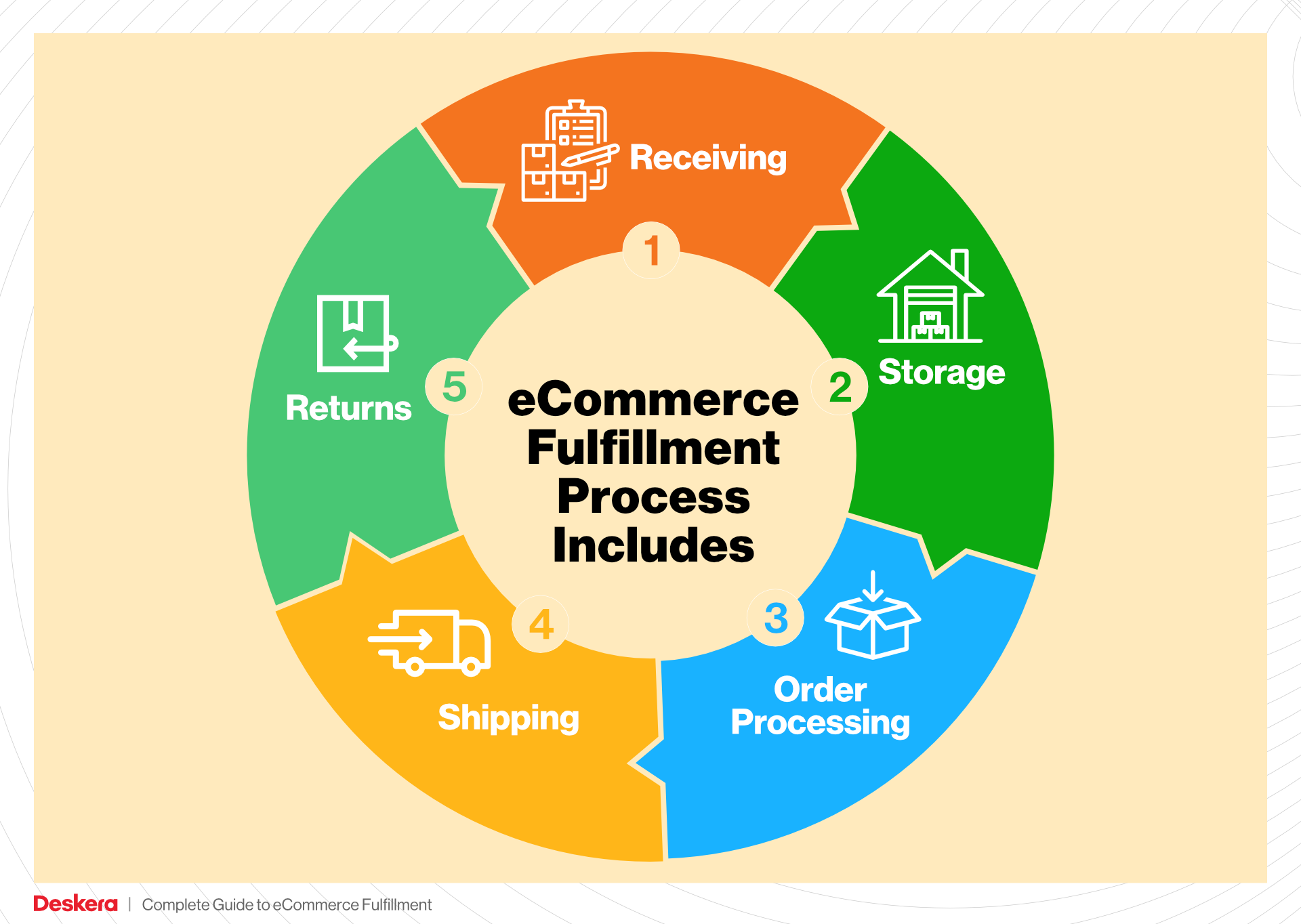
-
Choosing a Fulfillment Partner: Selecting the right fulfillment partner is critical. We’ll provide insights into what factors to consider, including technology integration, scalability, and customer service.
-
Pricing Structures: We’ll break down common pricing models so you can better understand the costs associated with different fulfillment solutions and make informed decisions.
The goal of this guide is to empower you with the knowledge necessary to make smart logistics decisions that will support your business growth. By choosing the right fulfillment strategy and partner, you can streamline operations, enhance customer satisfaction, and ultimately drive higher sales. Let’s navigate the complexities of e-commerce fulfillment together to ensure your business thrives in the competitive online marketplace.
What You’ll Learn In This Guide
- What is E-commerce Fulfillment? An Introduction for Growing Businesses
- The Order Fulfillment Process: From ‘Buy’ Button to Customer’s Door
- Comparing Fulfillment Models: In-House vs. 3PL vs. Dropshipping
- A Deep Dive into Amazon FBA: Pros, Cons, and Who It’s For
- Core Services Offered by Fulfillment Centers
- How to Choose a Fulfillment Partner: A 6-Point Checklist
- Understanding Fulfillment Pricing: A Breakdown of Common Fees
- Frequently Asked Questions (FAQs) about Fulfillment
- Conclusion: Is Outsourcing Fulfillment the Right Move for Your Business?
- Important Disclaimer
The Order Fulfillment Process: From ‘Buy’ Button to Customer’s Door
1. Receiving Inventory
The first step in the order fulfillment process is receiving inventory. When products arrive at your fulfillment center, they must be carefully checked against purchase orders to ensure accuracy. This involves verifying quantities, inspecting for damage, and confirming that the correct products have been delivered. The importance of this step cannot be overstated; accurate receiving establishes a solid foundation for inventory management and prevents issues down the line.
A key term associated with this step is SKU (Stock Keeping Unit). Each product should have a unique SKU that simplifies tracking and management. By organizing inventory using SKUs, you can quickly identify and locate products in your warehouse. This initial step sets the stage for efficient inventory control, ensuring that your stock levels are accurately reflected in your order management system.
2. Warehouse Storage
Once inventory is received and verified, the next step is warehouse storage. Proper storage is crucial as it affects how quickly and efficiently products can be picked later. Inventory should be organized in a logical manner, often categorized by product type, size, or sales velocity. This allows for streamlined access and minimizes time spent searching for items.
The term FIFO (First In, First Out) is significant in this context. FIFO is a method used to manage inventory that prioritizes selling older stock first, reducing the risk of obsolescence and spoilage, especially for perishable goods. Implementing effective warehouse storage strategies not only enhances operational efficiency but also ensures that customers receive the freshest products available.
3. Order Picking
Order picking is the process of selecting items from the warehouse to fulfill a customer order. This step is critical because the accuracy and speed of picking directly impact customer satisfaction. A well-organized picking process can significantly reduce order fulfillment times, which is essential in today’s fast-paced e-commerce environment.
One key tool in this process is the pick list, a document or digital interface that outlines the items needed for each order. This ensures that pickers know exactly what to retrieve and from where. Depending on your warehouse layout and order volume, you might choose between different picking methods, such as zone picking (where pickers are assigned specific areas) or batch picking (where multiple orders are picked simultaneously). Optimizing this step can lead to faster order processing and improved accuracy, ultimately enhancing the customer experience.
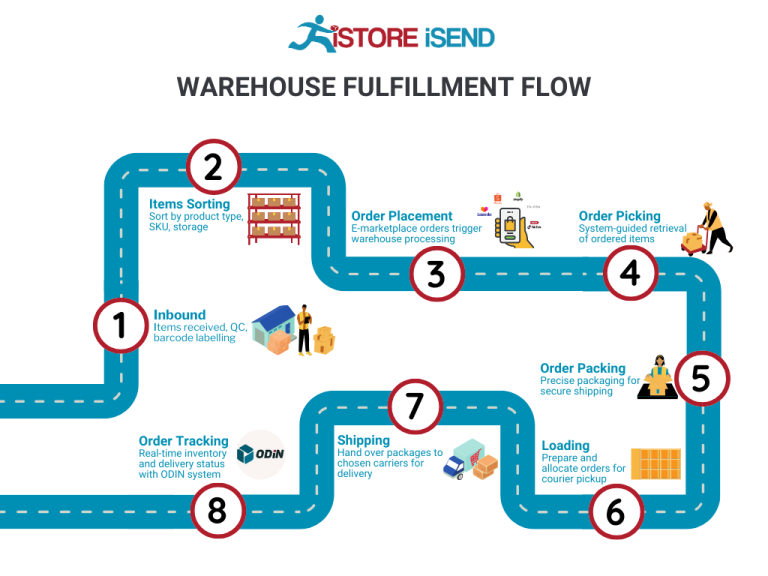
4. Order Packing
After items have been picked, the next step is order packing. This involves carefully packing the products to ensure they arrive at the customer’s door in perfect condition. Effective packing is important not only for protecting items during transit but also for creating a positive unboxing experience that reflects your brand’s values.
A crucial aspect of packing is the use of packing slips. These documents include order details and serve as a confirmation of what should be inside the package. Including branded elements such as custom packaging or inserts can enhance the customer experience and foster brand loyalty. Efficient packing processes also help minimize shipping costs by optimizing package size and weight, which is vital for maintaining profitability.
5. Shipping & Delivery
The final step in the order fulfillment process is shipping and delivery. Once orders are packed, they are labeled and prepared for shipment. This step involves selecting the best shipping carriers and methods to ensure timely delivery while balancing cost-effectiveness.
A vital term here is carrier management. Effective carrier management allows businesses to choose the most suitable shipping options based on speed, cost, and reliability. Utilizing real-time tracking technologies also enhances transparency and allows customers to monitor their orders from the moment they leave the warehouse until they arrive at their door. Streamlining this final step not only improves customer satisfaction but also reduces the likelihood of returns due to delivery issues, further enhancing your overall fulfillment strategy.
Conclusion
Understanding and optimizing each step of the order fulfillment process—from receiving inventory to shipping and delivery—is essential for e-commerce businesses aiming to scale. By implementing effective strategies and utilizing the right tools at every stage, you can enhance operational efficiency, reduce costs, and ultimately deliver a superior customer experience.
Comparing Fulfillment Models: In-House vs. 3PL vs. Dropshipping
Fulfillment Model Comparison
| Model | Who Handles Inventory | Best For (Business Stage) | Key Advantage | Key Disadvantage |
|---|---|---|---|---|
| In-House Fulfillment | The business itself | Established businesses with stable demand | Complete control over inventory and processes | High overhead costs and resource-intensive |
| Third-Party Logistics (3PL) | 3PL provider | Growing businesses seeking scalability | Access to expertise and technology | Less control over inventory and processes |
| Dropshipping | Supplier/Manufacturer | Startups and small businesses | Low startup costs and no inventory risk | Lower profit margins and potential quality issues |
In-House Fulfillment
In-house fulfillment involves managing all aspects of the order fulfillment process internally. This means that the business handles inventory storage, order processing, packing, and shipping directly. This model is often favored by established businesses with stable demand, as it allows for complete control over inventory management, quality assurance, and customer service. One significant advantage of in-house fulfillment is the ability to tailor operations to the specific needs of the business and its customers. Businesses can implement unique branding elements in packaging and maintain higher standards of quality and service. However, the key disadvantage is the high overhead costs associated with maintaining a warehouse, hiring staff, and investing in logistics technology. Additionally, as order volumes grow, managing fulfillment in-house can become increasingly resource-intensive, leading to operational challenges and inefficiencies.
Third-Party Logistics (3PL)
Third-party logistics (3PL) involves outsourcing the fulfillment process to a specialized provider. The 3PL handles everything from inventory storage to order processing, packing, and shipping on behalf of the business. This model is particularly beneficial for growing businesses that are looking to scale without the need for significant upfront investment in logistics infrastructure. A key advantage of using a 3PL is access to their expertise, advanced technology, and established networks, which can lead to improved operational efficiencies and cost savings. Furthermore, 3PL providers often have multiple fulfillment centers that can expedite shipping times and enhance customer satisfaction. However, one downside is the reduced control over inventory and fulfillment processes. Businesses may find it challenging to maintain brand consistency and quality assurance when relying on an external partner. Additionally, businesses must ensure that their 3PL provider aligns with their operational needs and customer expectations, which can require careful vetting and ongoing communication.
Dropshipping
Dropshipping is a fulfillment model where the retailer does not keep products in stock but instead transfers customer orders directly to a supplier or manufacturer. This model is particularly attractive for startups and small businesses, as it requires minimal upfront investment and eliminates the need to manage inventory. The key advantage of dropshipping is the low financial risk; businesses can offer a wide range of products without the need for physical inventory, thus freeing up capital to invest elsewhere. Furthermore, dropshipping allows entrepreneurs to test various products and markets with minimal commitment. However, the model comes with its own set of challenges. Profit margins can be lower compared to other fulfillment methods, as the retailer must pay the supplier’s wholesale price. Additionally, businesses may face quality control issues, as they rely on suppliers to fulfill orders and maintain product standards. There can also be delays in shipping and fulfillment, which may negatively impact customer satisfaction and brand reputation.
Conclusion
Choosing the right fulfillment model is crucial for e-commerce businesses looking to scale their operations effectively. Each model—In-House Fulfillment, 3PL, and Dropshipping—has distinct advantages and disadvantages, making it essential for business owners to evaluate their specific needs, resources, and growth objectives. By understanding the nuances of each fulfillment strategy, entrepreneurs can make informed decisions that align with their business goals and customer expectations.
A Deep Dive into Amazon FBA: Pros, Cons, and Who It’s For
Understanding Fulfillment by Amazon (FBA)
Fulfillment by Amazon (FBA) is a service offered by Amazon that allows sellers to store their products in Amazon’s fulfillment centers. Amazon takes care of storage, packaging, and shipping products on behalf of the sellers. This service not only streamlines logistics for e-commerce businesses but also enhances the visibility and credibility of products listed on Amazon. When customers order a product, Amazon handles the entire process, from picking and packing to shipping and customer service, allowing sellers to focus on growing their businesses.
How FBA Works
- Set Up an Account: To use FBA, sellers must create an Amazon seller account and enroll in the FBA program.
- Product Listing: Sellers list their products on Amazon and select FBA as the fulfillment method. This includes setting prices and managing product details.
- Shipping Inventory: Sellers send their products to Amazon’s fulfillment centers. Amazon provides guidelines on how to package and label items.
- Storage: Products are stored in Amazon’s warehouses until they are sold. Sellers can track their inventory levels through the Amazon Seller Central dashboard.
- Order Fulfillment: When a customer places an order, Amazon picks, packs, and ships the product. Customers receive notifications and tracking information.
- Customer Service: Amazon also manages customer service inquiries and returns for FBA orders, providing a seamless experience for buyers.
- Payment: Sellers receive payments for their sales, minus Amazon’s fees, which are deducted from the sales revenue.
Pros of Using Amazon FBA
1. Prime Eligibility
FBA products are eligible for Amazon Prime, which offers customers fast, free shipping options. This can significantly enhance the attractiveness of your products, leading to increased sales and a competitive edge over non-FBA listings.
2. Customer Trust
Amazon is a trusted platform, and products fulfilled by Amazon often carry that trust. Customers are more likely to purchase items that are marked as “Fulfilled by Amazon” because they expect reliable shipping and customer service.
3. Multi-Channel Fulfillment
FBA allows sellers to use Amazon’s logistics network for sales made through other platforms, such as their own websites or eBay. This multi-channel fulfillment capability means that businesses can streamline their operations and reduce shipping costs by using a single fulfillment partner.
4. Hassle-Free Logistics
FBA handles most of the logistical challenges associated with e-commerce. Sellers can offload the complexities of inventory management, order processing, shipping, and customer service, allowing them to focus on scaling their business.
5. Scalability
As your business grows, FBA can scale with you. Amazon’s extensive infrastructure means that you can handle increased order volumes without needing to invest in additional warehousing or staff.
Cons of Using Amazon FBA
1. High Fees
FBA comes with various fees, including storage fees, fulfillment fees, and additional charges for long-term storage. These costs can quickly accumulate and eat into profit margins, particularly for low-priced items.
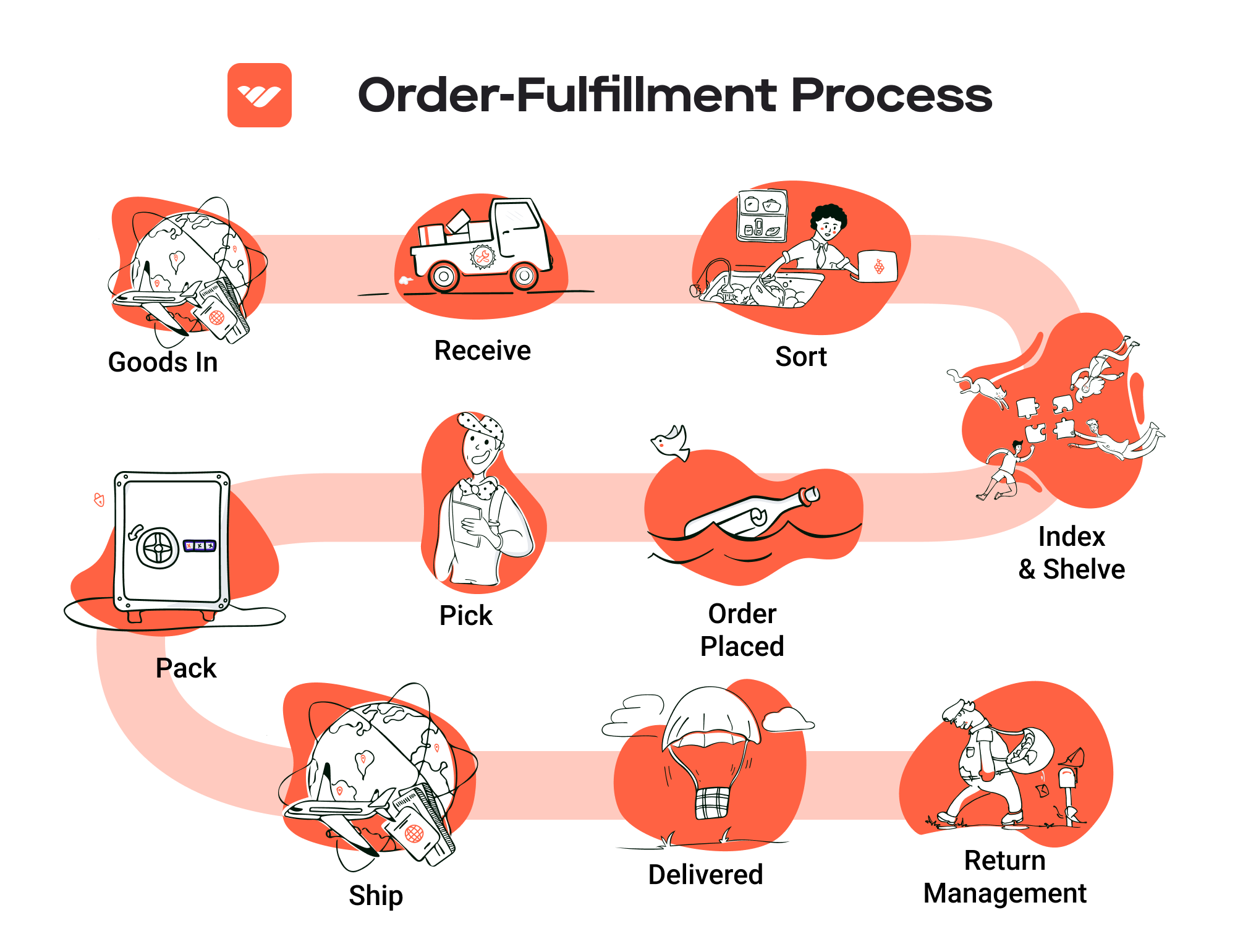
2. Strict Inventory Rules
Amazon has specific inventory requirements, including labeling, packaging, and shipping standards. Sellers must adhere to these guidelines closely, which can be time-consuming and lead to penalties if not followed correctly.
3. Commingling Risks
FBA products may be commingled with those of other sellers, meaning that when a customer orders a product, they may receive an item from a different seller’s inventory. This can lead to issues with quality control and brand reputation, particularly if the commingled inventory is damaged or of lower quality.
4. Limited Control
When using FBA, sellers relinquish some control over the fulfillment process. This includes how products are stored, packaged, and shipped. Any issues that arise in these areas may reflect poorly on the seller, even if they are out of their hands.
5. Dependency on Amazon
Relying on FBA means that sellers are heavily dependent on Amazon’s platform and policies. Changes in Amazon’s rules or fees can have a direct impact on a seller’s business, potentially leading to unforeseen challenges.
Who is FBA Best For?
Fulfillment by Amazon is particularly well-suited for:
- Small to Medium-Sized Businesses: Companies that want to grow their e-commerce presence without investing heavily in logistics infrastructure can benefit greatly from FBA.
- New Sellers: Entrepreneurs looking to enter the e-commerce space can leverage Amazon’s established trust and logistics to gain traction quickly.
- Brands with High Demand: Businesses that anticipate high sales volumes can take advantage of FBA’s scalability and efficient fulfillment services.
- Sellers with Limited Resources: Companies that lack the manpower or expertise to manage logistics can offload these responsibilities to Amazon.
- Multi-Channel Sellers: Brands that sell across various platforms and want a centralized fulfillment solution will find FBA’s multi-channel capabilities advantageous.
In conclusion, Fulfillment by Amazon offers a powerful solution for many e-commerce businesses, but it is essential to weigh the pros and cons carefully. Sellers should consider their specific needs, product types, and business goals to determine if FBA is the right choice for scaling their operations.
Core Services Offered by Fulfillment Centers
Inventory Management & Warehousing
Inventory management and warehousing are foundational services provided by fulfillment centers that play a crucial role in the efficiency of e-commerce operations. This service encompasses the storage, tracking, and management of inventory across various locations, ensuring that businesses have the right products in the right quantities available to meet customer demand.
A robust inventory management system allows e-commerce businesses to maintain real-time visibility of stock levels, forecast demand, and streamline reordering processes. By leveraging advanced technology, fulfillment centers can provide detailed analytics on inventory turnover rates, seasonal trends, and product performance. This data is invaluable for making informed purchasing decisions and optimizing stock levels, which can significantly reduce the risk of overstocking or stockouts.
The benefits of effective inventory management and warehousing include:
- Cost Efficiency: By optimizing inventory levels, businesses can minimize storage costs and reduce capital tied up in unsold goods.
- Improved Customer Satisfaction: With accurate inventory tracking, businesses can fulfill orders promptly, enhancing the customer experience and building brand loyalty.
- Scalability: As e-commerce businesses grow, fulfillment centers can easily scale their warehousing solutions to accommodate increased inventory demands without the need for significant upfront investment in infrastructure.
Pick and Pack Services
Pick and pack services are essential for fulfilling customer orders accurately and efficiently. This process involves selecting items from inventory (picking) and preparing them for shipment (packing). Fulfillment centers utilize sophisticated order management systems to streamline this process, ensuring that orders are processed quickly and with high accuracy.
During the picking stage, items are retrieved from the warehouse based on customer orders, often using automated systems to enhance speed and reduce errors. The packing stage involves organizing the selected items, often with protective materials, and ensuring that they are securely packaged for shipment. Many fulfillment centers also offer customization options, such as branded packaging or including promotional inserts, which can enhance the unboxing experience for customers.
The advantages of utilizing pick and pack services include:
- Faster Order Fulfillment: Automated systems and experienced staff can significantly reduce the time it takes to process orders, helping businesses meet customer expectations for quick delivery.
- Accuracy: Advanced technology and quality control measures minimize picking errors, ensuring that customers receive the correct items, which reduces the costs associated with returns and replacements.
- Flexibility: Fulfillment centers can accommodate fluctuating order volumes, making it easier for businesses to scale operations during peak seasons without compromising service quality.
Kitting and Assembly
Kitting and assembly services involve grouping multiple products into a single package or preparing items for sale through assembly. This service is particularly beneficial for businesses that offer products that are often sold together or require assembly before they can be sold to the customer. Examples include gift sets, subscription boxes, or products that need to be assembled before use.
Fulfillment centers that provide kitting and assembly services can help e-commerce businesses create unique product offerings that enhance customer value. By bundling products, businesses can increase average order value and offer convenient shopping experiences.
Key benefits of kitting and assembly services include:
- Increased Sales Opportunities: Bundling products can encourage customers to purchase more items, driving higher sales volumes.
- Enhanced Customer Experience: Offering pre-assembled products or gift sets simplifies the shopping experience for customers, making it more likely they will complete their purchase.
- Time Savings: Outsourcing kitting and assembly to fulfillment centers allows businesses to focus on core operations, freeing up time and resources that can be better utilized in areas such as marketing or product development.
Returns Management (Reverse Logistics)
Returns management, or reverse logistics, is a critical service offered by fulfillment centers that helps e-commerce businesses efficiently handle product returns. This process involves receiving returned items, inspecting them for damage, restocking them in inventory, and managing any necessary refurbishments or disposals.
A well-structured returns management system can enhance customer satisfaction by simplifying the returns process. Fulfillment centers often provide customers with easy-to-follow return instructions and manage the logistics of returning products to ensure a seamless experience.
The benefits of effective returns management include:
- Improved Customer Retention: A hassle-free returns process can enhance customer trust and satisfaction, leading to repeat purchases and increased brand loyalty.
- Cost Reduction: Streamlined returns processes can minimize the costs associated with handling returns, including labor, shipping, and inventory management.
- Valuable Insights: Analyzing return data can provide businesses with insights into product performance and customer preferences, helping them make informed decisions regarding product offerings and inventory management.
In conclusion, fulfillment centers offer a comprehensive suite of services that are crucial for scaling e-commerce operations. From efficient inventory management and streamlined pick and pack services to innovative kitting and assembly solutions and effective returns management, leveraging these services can significantly enhance an e-commerce business’s operational efficiency and customer satisfaction.
How to Choose a Fulfillment Partner: A 6-Point Checklist
Location & Warehouse Network
Why It’s Important:
The geographical location of your fulfillment partner’s warehouses can greatly affect shipping times and costs. A partner with strategically located warehouses can help you reach your customers faster and reduce shipping expenses, which is critical for maintaining customer satisfaction and profitability.
Questions to Ask:
– Where are your fulfillment centers located, and how does that align with my target markets?
– How do you handle shipping logistics for different regions?
– What are your delivery times for standard and expedited shipping options?
Technology & Integrations
Why It’s Important:
The technology used by your fulfillment partner can streamline your operations, improve order accuracy, and enhance customer service. It’s essential that their systems integrate seamlessly with your existing e-commerce platforms, inventory management tools, and other software to ensure a smooth flow of information.
Questions to Ask:
– What order management and warehouse management systems do you use?
– Can your technology integrate with my current e-commerce platform and other tools?
– How do you handle real-time inventory tracking and updates?
Specializations (e.g., Cold Storage, Oversized Items)
Why It’s Important:
Depending on the nature of your products, you may need a fulfillment partner that specializes in certain areas, such as cold storage for perishables or handling oversized items. Choosing a partner with relevant expertise can help prevent damage to products and ensure compliance with industry regulations.
Questions to Ask:
– Do you have any specialized facilities or capabilities for my product type (e.g., temperature-controlled storage, large item handling)?
– What experience do you have in managing and fulfilling orders for similar products?
– How do you ensure compliance with industry-specific regulations?
Scalability & Capacity
Why It’s Important:
As your business grows, your fulfillment needs will likely change. Your partner should be able to scale with you, whether you’re expanding your product line, entering new markets, or experiencing seasonal spikes in demand. A partner with flexible capacity can help you avoid stockouts or excessive costs.
Questions to Ask:
– How do you handle sudden increases in order volume, such as during peak seasons?
– What is your current capacity, and how can you accommodate my growth?
– Are there additional costs associated with scaling my fulfillment operations?
Pricing and Contracts
Why It’s Important:
Understanding the pricing structure and contract terms of a potential fulfillment partner is crucial for budgeting and financial planning. Look for transparency in pricing models, as hidden fees can quickly erode your margins. Additionally, flexible contract terms can provide you with the agility needed in a rapidly changing market.
Questions to Ask:
– Can you provide a detailed breakdown of your pricing model, including all potential fees?
– What are the terms of your contracts, and is there flexibility in case my needs change?
– Are there volume discounts or promotional rates available?
Customer Support & Reviews
Why It’s Important:
A reliable fulfillment partner should provide exceptional customer support to address any issues that arise. Reading reviews and testimonials can give you insights into their reliability, responsiveness, and overall performance. Strong customer support can also enhance your operational efficiency and improve your customer experience.
Questions to Ask:
– What customer support options do you offer (e.g., phone, email, chat)?
– How quickly can I expect a response to inquiries or issues?
– Can you provide references or case studies from current clients, particularly in my industry?
Final Thoughts
Choosing the right fulfillment partner is a critical decision that can significantly impact your e-commerce business’s success. By using this checklist, you can systematically evaluate potential partners to ensure they meet your specific needs and are well-equipped to support your growth. Take the time to ask the right questions and carefully assess each option based on the criteria outlined above. Your fulfillment partner should not only be an operational ally but also a strategic partner in your journey toward scaling your business.
Understanding Fulfillment Pricing: A Breakdown of Common Fees
Initial Setup Fees
When partnering with a fulfillment service, businesses often encounter initial setup fees. These fees cover the costs associated with integrating your e-commerce platform with the fulfillment provider’s systems. This may include software configuration, initial inventory intake, and training on the fulfillment process.
Typically, setup fees can vary based on the complexity of your operations and the provider’s pricing structure. For instance, a straightforward integration with minimal customization may incur lower fees, while a more complex setup involving multiple sales channels or unique inventory requirements might cost more. Businesses should inquire about these fees upfront and ensure they understand what is included in the setup process to avoid unexpected costs.
Receiving Fees
Receiving fees are charged when inventory arrives at the fulfillment center. These fees account for the labor and resources needed to unload, inspect, and put away inventory in the warehouse.
Receiving fees are often calculated based on the volume of inventory received, typically expressed as a cost per pallet or per item. For example, if you send a shipment of 100 pallets, the fulfillment provider may charge a specific fee for each pallet received. This fee can vary depending on the complexity of the receiving process, such as whether the items require additional handling or inspection. It’s wise for businesses to assess their inventory arrival patterns and negotiate terms that reflect their shipping frequency and volume.
Storage Fees (per pallet/bin)
Storage fees are recurring charges incurred for the space your inventory occupies within the fulfillment center. This fee is typically calculated on a monthly basis, based on the number of pallets or bins utilized.
Fulfillment providers may offer different pricing tiers based on the amount of space you need. For instance, businesses with higher inventory turnover may benefit from lower per-pallet rates compared to those with slower-moving stock. Additionally, some providers may charge different rates for ambient, refrigerated, or specialty storage. To manage costs effectively, businesses should regularly review their inventory levels and adjust their storage needs accordingly, ensuring they are not paying for unnecessary space.
Pick & Pack Fees (per item/order)
Pick and pack fees are charged for the labor involved in selecting items from the warehouse and preparing them for shipment. This fee can be calculated per order or per item, depending on the fulfillment provider’s pricing model.
For example, if a customer orders three items, a fulfillment center might charge a fee for picking each item and an additional fee for packing the entire order. Some providers may offer tiered pricing where the cost per item decreases as order volumes increase, incentivizing businesses to scale their operations. Understanding your order patterns can help you negotiate better terms, especially if you anticipate significant growth.
Shipping Fees
Shipping fees represent the costs associated with transporting orders to customers. These fees can vary significantly based on factors such as shipping method (e.g., standard, expedited), package weight, dimensions, and destination.
Fulfillment providers typically have relationships with various carriers, allowing them to offer competitive shipping rates. Businesses may benefit from negotiating bulk shipping rates or selecting a provider that optimizes shipping costs based on order volume and delivery zones. It’s crucial to evaluate shipping options regularly and consider how changes in your product offerings might affect shipping costs.
Tips for Getting an Accurate Quote
-
Provide Detailed Information: When requesting quotes from fulfillment providers, be as detailed as possible about your business needs. Include information on order volume, product dimensions, expected inventory turnover, and any special handling requirements.
-
Ask About All Fees: Ensure you understand all potential fees associated with the fulfillment process. Inquire about any hidden costs that may not be immediately apparent, such as chargebacks or additional handling fees.
-
Negotiate Terms: Don’t hesitate to negotiate pricing terms. Many fulfillment providers are open to discussions, especially if you can demonstrate expected growth or a long-term partnership.
-
Request Sample Quotes: If possible, request sample quotes based on your typical order volume and product types. This will provide a clearer picture of what your actual costs will look like.
-
Review Contracts Carefully: Before signing any agreement, carefully review the contract for pricing structures and terms. Ensure you understand the conditions under which fees may change and the process for any potential adjustments.
By understanding these common fulfillment pricing models and taking proactive steps to gather accurate information, e-commerce businesses can better manage their logistics costs and set themselves up for successful scaling.
Frequently Asked Questions (FAQs) about Fulfillment
1. What is card fulfillment service?
Card fulfillment service involves the processes of receiving, storing, packing, and shipping card products (such as gift cards, loyalty cards, or membership cards) directly to customers. This service is crucial for e-commerce businesses that want to ensure timely delivery and maintain customer satisfaction.
2. How does card fulfillment differ from traditional fulfillment?
While both card fulfillment and traditional fulfillment involve warehousing and shipping, card fulfillment is specialized. It focuses on handling card products, which may require unique packaging, secure handling, and specific inventory management practices due to their value and potential for fraud.
3. What is a fulfillment center?
A fulfillment center is a specialized warehouse designed to store products and manage the logistics of order fulfillment. Unlike traditional warehouses, fulfillment centers are equipped with technology and processes to pick, pack, and ship products directly to customers, often in response to online orders.
4. What’s the difference between a warehouse and a fulfillment center?
The primary difference lies in their purpose. A warehouse is generally used for storage, while a fulfillment center is designed for order processing and shipping. Fulfillment centers typically have advanced systems for inventory management and order tracking, enabling faster turnaround times and improved customer service.
5. What is a 3PL (Third-Party Logistics)?
A 3PL is a company that provides outsourced logistics services, including transportation, warehousing, and order fulfillment. By partnering with a 3PL, e-commerce businesses can leverage their expertise, technology, and infrastructure to streamline operations and scale efficiently without the overhead of managing logistics in-house.
6. How much do fulfillment services cost?
The cost of fulfillment services can vary widely based on several factors, including the volume of orders, the type of products, storage needs, shipping destinations, and additional services like kitting or custom packaging. Businesses should request quotes from multiple providers to compare pricing structures and find a solution that fits their budget and needs.
7. What are value-added services in card fulfillment?
Value-added services in card fulfillment may include custom packaging, branded inserts, gift wrapping, and kitting (combining multiple items into one package). These services enhance the customer experience and allow businesses to create a unique brand identity through their packaging and presentation.
8. How can I track my inventory in a fulfillment center?
Most modern fulfillment centers use advanced inventory management systems that provide real-time tracking and reporting. These systems allow businesses to monitor stock levels, track order status, and manage reordering processes efficiently, ensuring that inventory is always aligned with customer demand.
9. What should I look for in a card fulfillment service provider?
When selecting a card fulfillment service provider, consider factors such as their experience with card products, technology capabilities (like order management systems), shipping options, customer service responsiveness, and additional services they offer. It’s also essential to ensure they have a proven track record with brands similar to yours.
10. How quickly can I start shipping with a fulfillment provider?
The onboarding process with a fulfillment provider can vary but typically ranges from a few days to several weeks. Factors influencing this timeline include the complexity of your product offerings, the integration of your e-commerce platform with the provider’s systems, and the setup of inventory management processes. Many providers offer expedited onboarding to help businesses start shipping as quickly as possible.
Conclusion: Is Outsourcing Fulfillment the Right Move for Your Business?
Evaluating the Advantages of Outsourcing Fulfillment
Outsourcing fulfillment can be a transformative decision for e-commerce businesses aiming to scale efficiently. One of the most compelling benefits is time savings. By delegating order fulfillment to a specialized partner, you free up valuable resources that can be redirected toward core business activities such as marketing, product development, and customer engagement. This shift allows your team to focus on strategic initiatives that drive growth rather than getting bogged down in logistics.
Scalability is another critical advantage. As your business grows, so do the complexities of managing inventory and fulfilling orders. A proficient fulfillment service can seamlessly adapt to your scaling needs, whether you experience a surge during peak seasons or consistent year-over-year growth. This flexibility ensures that you can meet customer demands without compromising on service quality.
Moreover, leveraging the expertise of a fulfillment partner introduces best practices and advanced technologies into your operations. Many fulfillment services offer robust inventory management systems, real-time tracking, and data analytics, providing insights that can enhance operational efficiency and customer satisfaction. This level of specialization is often unattainable for smaller businesses trying to handle logistics internally.
However, the success of outsourcing fulfillment hinges on selecting the right partner. It’s essential to evaluate potential providers based on their capabilities, technology, and alignment with your business goals. The right partner can serve as an extension of your team, contributing to your overall brand experience.
As a strategic next step, we encourage you to conduct a thorough audit of your current shipping and fulfillment processes. Assess whether your existing setup meets your growth objectives and customer expectations. Consider if engaging a fulfillment partner could be the key to unlocking your business’s full potential.
Important Disclaimer
⚠️ Important Disclaimer
The information in this guide is for educational purposes. Fulfillment services, pricing, and platform features change frequently. Always conduct your own due diligence and consult with providers directly before making business decisions.
